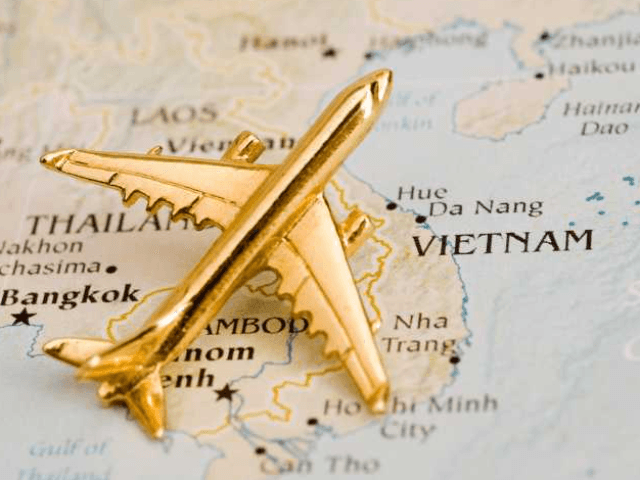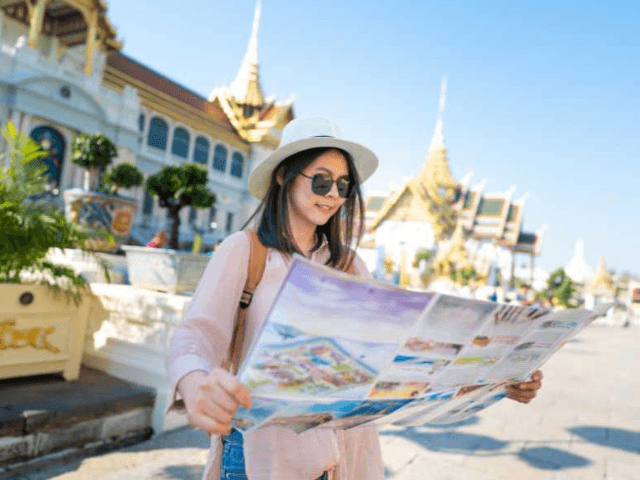Halfway around the world, the United States (the US) and Vietnam have many common and different in lifestyle, tradition and culture. So what to prepare for your travel to Vietnam from the US – Visa, Flight, Money? Things to know for Vietnam tour pack
TABLE OF CONTENTS
1
Vietnam Travel Guide for US Citizens - Visa, Flights, and Money Tips
2
Vietnam Visa Guide for US Citizens
Do US Citizens Need a Visa to Visit Vietnam?
Visa Exemption Policies (If Any)
Types of Vietnam Visas for US Travelers
How to Apply for a Vietnam Visa from the USA?
Common Visa Mistakes to Avoid
3
Flights from the USA to Vietnam - Best Options & Travel Tips
Best Airlines Flying from the US to Vietnam
How to Find the Cheapest Flights to Vietnam
Entry Airports in Vietnam - Where Should You Land?
What to Expect at Vietnam’s Airports?
4
Money Matters - Currency, Payments & Budgeting in Vietnam
What Currency is Used in Vietnam?
Should You Bring US Dollars (USD)? Where to Exchange?
Best Ways to Access Money in Vietnam
Budgeting for Your Vietnam Trip
Common Money Scams & Safety Tips
5
Conclusion - A Hassle-Free Trip to Vietnam for US Travelers
Planning Ahead for a Smooth Journey
Key Takeaways for Visa, Flights, and Money Management
Vietnam Travel Guide for US Citizens - Visa, Flights, and Money Tips
Everything you need to know before traveling to Vietnam from the USA - visa requirements, flight options, and money management tips.
Vietnam Visa Guide for US Citizens
Do US Citizens Need a Visa to Visit Vietnam?
U.S. citizens need a visa to enter Vietnam for tourism, business, or other purposes. The only exceptions are under special conditions (see the "Visa Exemption Policies" below). Travelers must apply for a visa before arriving in Vietnam, unless they qualify for visa exemption in specific cases.
Vietnam offers several visa options based on the duration and purpose of your visit:
Tourist Visa (DL):
- Valid for 30 or 90 days, single or multiple entry
- Most commonly used visa type for vacation or leisure trips
- Can be applied for online via Vietnam’s e-Visa system
Business Visa (DN1, DN2):
- Required for travelers doing business, attending meetings, or working with Vietnamese companies
- Valid for 30 days up to 1 year, depending on the case
- Must usually be sponsored by a Vietnamese business or organization
Other Visas: Visas for work, study, journalism, and diplomatic purposes are available but require more documentation and sponsorship.
Important Note: Always check your passport’s validity. It must be valid for at least 6 months from your date of entry and have at least one blank page for the visa.
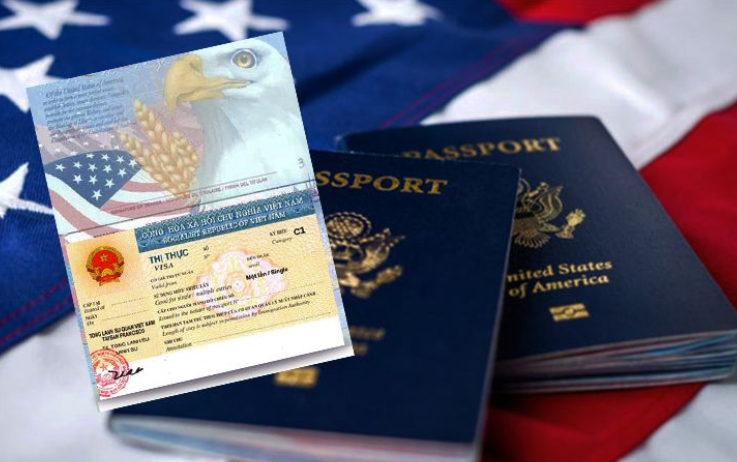
Visa Exemption Policies (If Any)
While most U.S. citizens need a visa, there are a few cases where visa exemption may apply:
1. For Vietnamese-Americans and Their Immediate Family
U.S. citizens of Vietnamese origin, or those married to or born to Vietnamese citizens, may apply for a Certificate of Visa Exemption:
- Allows multiple entries into Vietnam without a visa
- Each stay can last up to 180 days
- The certificate is valid for up to 5 years
Application is available at Vietnamese embassies or consulates and requires documents such as passport copies and proof of Vietnamese heritage or family ties.
2. Visa-Free Travel to Phu Quoc Island
U.S. citizens can enter Phu Quoc Island visa-free for up to 30 days if:
- They arrive directly to Phu Quoc from another country (not via mainland Vietnam)
- They do not leave Phu Quoc to travel to the mainland during their stay
This exemption applies only to Phu Quoc, not the rest of Vietnam.
Types of Vietnam Visas for US Travelers
E-Visa: How to apply, processing time, and validity
US citizens are eligible to apply for Vietnam’s e-visa system, which is the most convenient option for short to medium-term stays. The application is completed online via Vietnam’s official immigration portal. You’ll need a scanned passport copy, a recent passport-style photo, and a valid email address. The processing time typically takes 3 to 5 working days. As of the latest update, the e-visa is valid for up to 90 days, with options for both single and multiple entries. Once approved, the e-visa is emailed as a PDF which you must print and present upon arrival. This visa is accepted at major airports, land borders, and seaports across Vietnam.
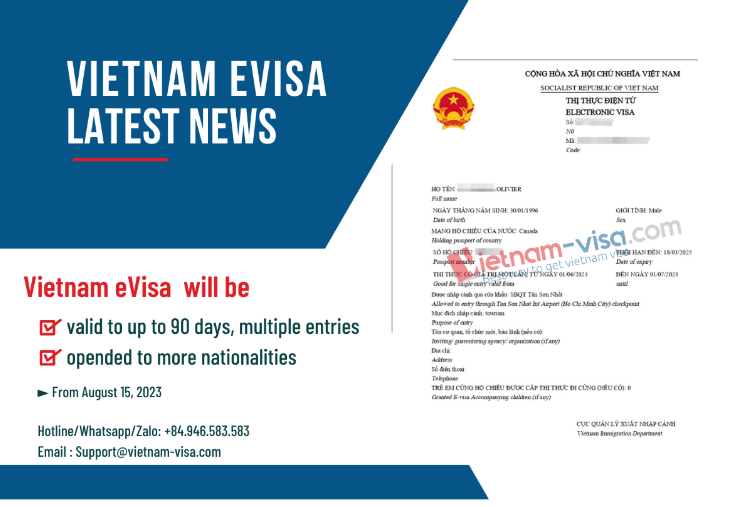
Visa on Arrival (VOA): Process, required documents, and fees
Visa on Arrival (VOA) is another option, but it’s only available for air travel to Vietnam. Before departure, travelers must apply online for a visa approval letter through an authorized travel agency. Upon arrival at one of Vietnam’s international airports, travelers submit the approval letter, two passport photos, a completed entry-exit form, and their passport. The visa is then stamped at the airport. VOA fees include a service fee (paid online when applying for the approval letter) and a stamping fee, which is paid in cash upon arrival (usually around $25 USD for a single-entry visa, and more for multiple entries). This method is not available for land or sea entry.

Tourist Visa: 30-day and 90-day options explained
As of August 2023, Vietnam offers an e-visa that covers both 30-day and 90-day stays for tourists. US travelers can select either duration when applying online. The 30-day visa is ideal for short vacations, while the 90-day visa suits those exploring the country at a slower pace or traveling throughout Southeast Asia and returning to Vietnam. Both single-entry and multiple-entry options are available, providing flexibility depending on your travel plans.
Business Visa & Long-Term Stay Options
For US citizens conducting business in Vietnam, the business visa is a practical choice. This visa requires a sponsorship letter from a Vietnamese business entity. Business visas may range from 1 month to 12 months, with either single or multiple entries. Unlike tourist visas, the process often involves submitting documents through a Vietnamese sponsor or company representative and might require additional paperwork, such as a business invitation letter. If you're planning to live or work in Vietnam long-term, consider looking into temporary residence cards (TRCs), which are typically issued after obtaining a work permit or through business investment channels.
How to Apply for a Vietnam Visa from the USA?
Step-by-step guide for e-visa application
Applying for a Vietnam e-visa is straightforward and can be done entirely online. Here’s how US citizens can apply:
- Visit the official Vietnam Immigration portal (https://evisa.xuatnhapcanh.gov.vn).
- Prepare your documents: You’ll need a valid passport (with at least 6 months' validity and 2 blank pages), a passport-sized photo (white background, no glasses), and a scanned copy of your passport's biographical page.
- Fill out the application form: Provide your personal details, intended entry/exit points, travel dates, and upload the necessary documents.
- Pay the visa fee: The standard fee for an e-visa is $25 USD, non-refundable, and payable via international card.
- Wait for processing: Processing typically takes 3-5 business days, though delays can happen during holidays or high-demand periods.
- Download and print your e-visa: Once approved, you'll receive a PDF file via email. Print it out and present it upon arrival in Vietnam.

Embassy vs. online visa applications
If you prefer not to apply online, or if you're staying in Vietnam for business or over 90 days, you can apply for a visa at the Vietnamese Embassy or Consulate in the USA. This method may be suitable for travelers who require a visa type not available online (e.g., long-term business visas). You’ll need to complete a paper application, submit your passport and required documents either by mail or in person, and wait for processing. While this method is more traditional, it generally takes 5-7 business days and may include additional administrative steps.
In comparison, the e-visa is faster, more accessible, and ideal for most tourists. However, if you're unsure about eligibility or need assistance with specific travel requirements, the embassy option may offer more personalized support.
Fees and processing times
- E-Visa: $25 USD (single-entry or multiple-entry), processing in 3-5 working days.
- Visa on Arrival (VOA): Service fee (varies by provider) + stamping fee at the airport ($25-$50 USD), processing of the approval letter usually takes 2-3 days.
- Embassy Visa: Fees vary depending on the type and duration of the visa. Expect to pay anywhere from $80-$150 USD. Processing time is around 5-7 working days.
For the smoothest experience, it’s recommended to apply at least one to two weeks before your intended travel date, regardless of the method you choose.
Common Visa Mistakes to Avoid
Incorrect application details
One of the most common mistakes travelers make when applying for a Vietnam visa is entering incorrect information. This could be a typo in your full name, an incorrect passport number, or selecting the wrong date of entry. Since most visa processes, especially e-visas, are handled digitally, even small errors can lead to delays or outright rejections. Always double-check every field before submitting your application to avoid issues later on.
Expired passports (must be valid for at least six months)
Vietnam strictly enforces the rule that your passport must be valid for at least six months from your planned date of entry. Some travelers overlook this detail and only realize it at the airport check-in desk or upon arrival. Make sure to check your passport’s expiration date well in advance. If it’s nearing the six-month threshold, renew it before starting the visa process.
Choosing the wrong visa type
Different visa types are designed for different purposes-tourist, business, or long-term stay. Selecting the wrong one can result in being denied entry or violating visa terms. For example, applying for a tourist visa while intending to attend business meetings is not permitted. Take the time to understand what each visa type allows and choose the one that fits your itinerary and purpose of visit.
Flights from the USA to Vietnam - Best Options & Travel Tips
Best Airlines Flying from the US to Vietnam
When planning your journey from the United States to Vietnam, choosing the right airline and route can significantly affect your comfort and budget. While there are currently no direct flights from the US to Vietnam, many reputable airlines offer smooth and efficient connecting options, mostly through transit hubs in Asia or the Middle East.
Popular routes from New York, Los Angeles, San Francisco
Travelers typically depart from major international hubs such as New York (JFK), Los Angeles (LAX), or San Francisco (SFO). From these cities, you can find convenient connections to major Vietnamese airports including Hanoi (Noi Bai International Airport - HAN) and Ho Chi Minh City (Tan Son Nhat International Airport - SGN).
- From New York: Most flights transit through cities like Tokyo, Seoul, Doha, or Taipei.
- From Los Angeles: Popular layover cities include Hong Kong, Incheon, and Narita.
- From San Francisco: You’ll find efficient one-stop routes via Seoul, Taipei, or Singapore.

Airlines offering direct and connecting flights
Though direct flights are limited, several top-rated airlines provide excellent one-stop services:
- Vietnam Airlines: Vietnam’s national carrier offers connecting services through partner airlines and is known for its hospitality and Vietnamese cuisine on board.
- Korean Air & Asiana Airlines: These South Korean carriers are among the most popular choices, offering quick layovers at Seoul’s Incheon Airport.
- Japan Airlines & ANA (All Nippon Airways): Highly rated for service and punctuality, they offer smooth connections via Tokyo.
- Qatar Airways & Emirates: Known for luxury and quality service, they offer longer routes with layovers in Doha or Dubai but often include very competitive fares.
- EVA Air & China Airlines: Based in Taiwan, they provide consistent and budget-friendly options with transit in Taipei.

When booking your flight, consider your priorities-whether it’s the total travel time, baggage allowance, seat comfort, or cost. Some routes may take over 20 hours including layovers, so choosing the right airline can make all the difference in how refreshed you feel upon arrival in Vietnam.
How to Find the Cheapest Flights to Vietnam
Securing affordable flights to Vietnam requires strategic planning and the use of effective tools. Here's a comprehensive guide to help you navigate the process:
Best Booking Time to Get Affordable Fares
- Advance Booking: Aim to book your flights 2 to 4 months in advance. For peak travel periods, such as summer or major holidays, consider booking 4 to 6 months ahead to secure better prices.
- Off-Peak Travel: Traveling during Vietnam's shoulder seasons-typically April to June and September to November-can result in lower fares and fewer crowds.
Flight Comparison Websites and Apps Available in Vietnam
Utilizing reliable flight comparison tools can significantly aid in finding the most affordable options. Here are some of the top platforms accessible and effective for travelers in Vietnam:
- Skyscanner: Renowned for its comprehensive search capabilities, Skyscanner compares prices across various airlines and travel agencies, offering features like flexible date searches and price alerts.
- Momondo: Known for uncovering hidden deals, Momondo searches numerous airlines and travel sites, presenting a wide array of options to suit different budgets.
- Traveloka: Popular in Southeast Asia, Traveloka offers a user-friendly platform for booking flights, hotels, and other travel services, often featuring promotions tailored to the Vietnamese market.
- KAYAK: Offers extensive filters and fare forecasting, allowing users to determine the optimal times to book flights.
- Google Flights: This platform provides an intuitive interface with tools to explore destinations, monitor fare trends, and assess date flexibility, helping travelers identify cost-effective routes.
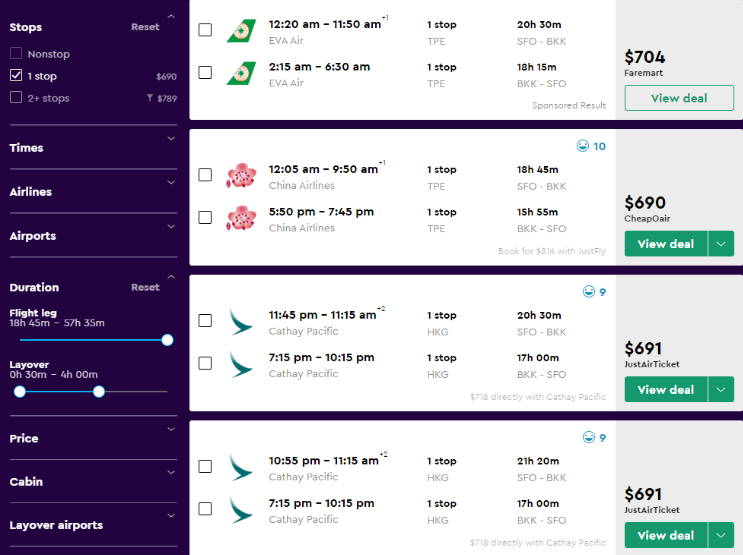
Tips for Flexible Travel Dates and Layover Strategies
Flexibility can lead to significant savings:
- Travel Dates: Flying mid-week, particularly on Tuesdays and Wednesdays, often results in lower fares.
- Layovers: Considering flights with layovers in major hubs like Seoul, Tokyo, or Bangkok can reduce costs. Some airlines offer free or low-cost stopover programs, allowing you to explore an additional city en route to Vietnam.
By combining early planning, utilizing the right tools, and maintaining flexibility in your travel plans, you can secure the most affordable flights to Vietnam, enhancing your overall travel experience.
Entry Airports in Vietnam - Where Should You Land?
Choosing the right airport to fly into depends on your travel itinerary and the regions of Vietnam you wish to explore. Vietnam has three major international gateways that cater to travelers from the U.S. and around the world.
Hanoi (Noi Bai International Airport - HAN)
Located in northern Vietnam, Noi Bai International Airport is the main entry point for travelers heading to the capital city, Hanoi, and nearby destinations like Ha Long Bay, Ninh Binh, and Sapa. It’s a modern airport offering various international connections, especially from East Asia and Europe. If your trip begins in the north, this is the most convenient and efficient arrival option.
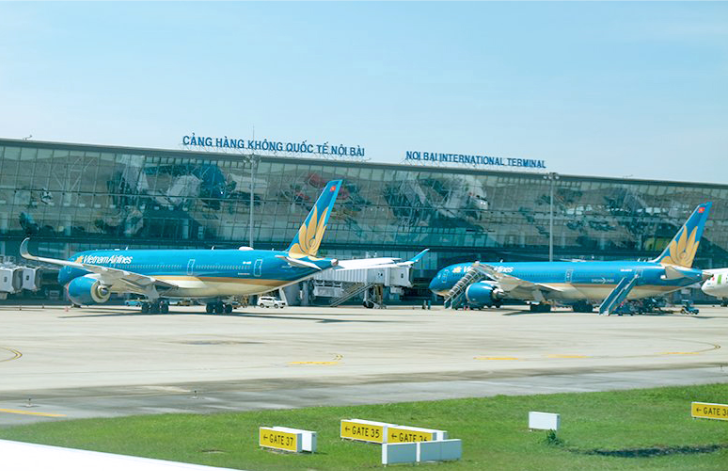
Ho Chi Minh City (Tan Son Nhat International Airport - SGN)
As the busiest airport in Vietnam, Tan Son Nhat is the primary hub for travelers visiting the south. It's ideal if you're planning to explore Ho Chi Minh City, the Mekong Delta, or nearby beach towns like Vung Tau and Mui Ne. Most flights from the U.S. route through major Asian transit hubs before landing here, and it often has more frequent international arrivals compared to other Vietnamese airports.

Da Nang (Da Nang International Airport - DAD) - Best for Central Vietnam
Da Nang International Airport is a great entry point for those looking to explore central Vietnam. From here, you can easily access popular destinations like Hoi An, Hue, and the Marble Mountains. While it receives fewer international flights than Hanoi or Ho Chi Minh City, it’s well-connected via domestic routes and a handful of international flights from cities like Seoul, Bangkok, and Singapore. If you're interested in Vietnam's scenic coastlines and cultural heritage, Da Nang is a great place to start.
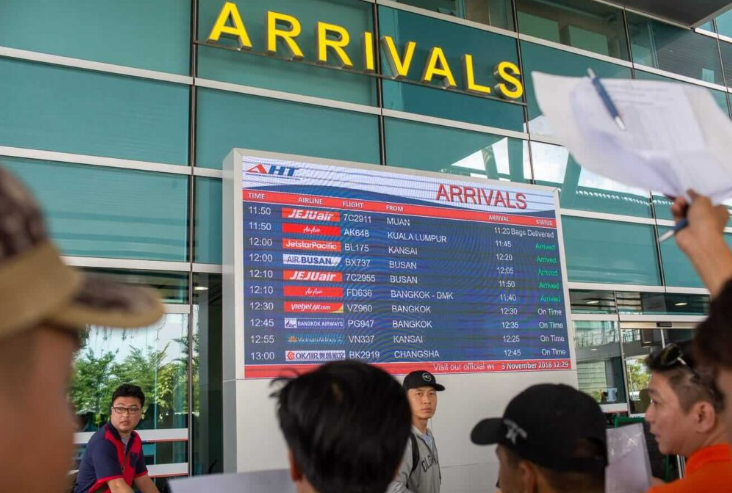
Each of these airports is equipped with transportation options, including taxis, ride-hailing apps like Grab, and shuttle services, making it easy to begin your Vietnam adventure no matter where you land.
What to Expect at Vietnam’s Airports?
When arriving in Vietnam, especially at major international airports like Hanoi (HAN), Ho Chi Minh City (SGN), or Da Nang (DAD), travelers from the U.S. can expect a fairly streamlined experience. However, it’s helpful to know what to expect in terms of procedures and logistics to avoid surprises.
Visa Procedures Upon Arrival
If you’re entering Vietnam with an e-visa, the process is typically fast and straightforward. You’ll present a printed copy of your e-visa, your passport (valid for at least six months), and an immigration form (if required) at the immigration counter. The officer will check your documents, stamp your passport, and grant you entry.
If you’ve applied for a Visa on Arrival (VOA), you’ll need to go to the VOA counter before immigration. There, you’ll present your approval letter, passport photos, and pay the stamping fee in cash (USD is accepted). After getting your visa stamped, proceed to immigration.
Customs and Baggage Claim
Once through immigration, follow the signs to baggage claim. Vietnam’s airports are generally organized, and luggage carts are available for free. After collecting your luggage, you’ll pass through customs. Most travelers experience a quick screening; however, customs officers may ask to check your bags if you’re carrying large quantities of electronics or other high-value goods. Be sure not to bring prohibited items like drones without permission or excessive cash.
Transportation Options from the Airport
After exiting customs, you’ll find a range of transportation options:
- Taxi counters are located inside the terminal. Stick to reputable companies like Mai Linh or Vinasun to avoid scams.
- Ride-hailing apps like Grab, Be are widely used and often cheaper than taxis. You can order a ride via your phone and meet the driver at the designated pickup area.
- Airport shuttles or hotel transfers are convenient if pre-booked, especially if you're carrying lots of luggage or arriving late at night.
Public buses are available in Hanoi and Ho Chi Minh City, but they can be confusing if you’re new to Vietnam and traveling with heavy luggage.

In general, Vietnam’s airports are modern, traveler-friendly, and offer amenities like free Wi-Fi, SIM card stalls, money exchange, and ATMs right in the arrival area. With a little preparation, your arrival will be smooth and stress-free.
Money Matters - Currency, Payments & Budgeting in Vietnam
What Currency is Used in Vietnam?
Vietnam uses the Vietnamese Dong (VND) as its official currency. The Dong is available in both coins and banknotes, but coins are rarely used today. The most common banknotes range from 1,000 VND to 500,000 VND, and they all come in a similar size, so it’s easy to confuse them-pay close attention when paying or receiving change.
As of early 2025, the exchange rate fluctuates around 1 USD = 24,000-26,000 VND, but this can vary daily. While prices may seem high at first glance due to the large denominations, Vietnam remains an affordable destination for U.S. travelers. For example, a meal at a local restaurant might cost around 40,000-80,000 VND ($1.50-$3.50), and a cup of traditional Vietnamese coffee is usually under 30,000 VND ($1.20).
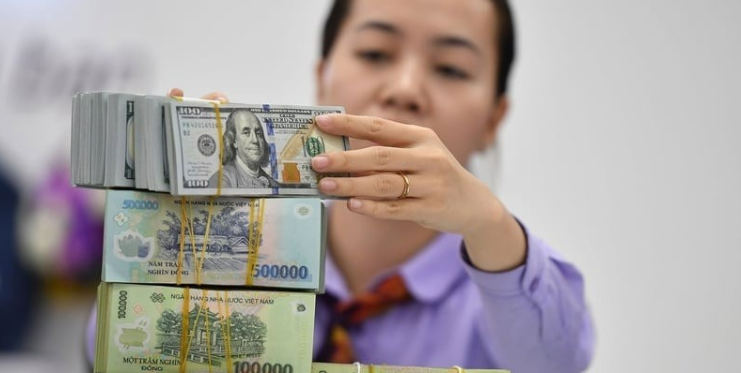
Should You Bring US Dollars (USD)? Where to Exchange?
Yes, bringing some US dollars is a good idea, especially for initial expenses like taxis, SIM cards, or emergencies. However, USD is not commonly accepted in local markets or shops-you’ll need to convert it to VND.
There are several reliable places to exchange money:
- Banks such as Vietcombank, BIDV, or ACB offer secure and legal currency exchange services, often with better rates than the airport.
- Gold shops in major cities also provide competitive rates, though you should only use licensed and reputable ones.
- Exchange counters at airports are convenient but usually offer lower rates. It’s best to exchange just enough for your taxi or initial expenses upon arrival.
Avoid exchanging money on the street or with unofficial vendors to prevent scams or counterfeit notes. Also, always count your money carefully and ask for a receipt when possible.
Best Ways to Access Money in Vietnam
Accessing your money while traveling in Vietnam is fairly convenient, but knowing the best methods will help you avoid unnecessary fees and stay secure.
Using ATMs Safely
ATMs are widely available in cities like Hanoi, Ho Chi Minh City, and Da Nang. Most machines accept international cards (Visa, MasterCard, etc.) and allow you to withdraw Vietnamese Dong. However, there are a few things to keep in mind:
- Withdrawal limits usually range from 2,000,000 VND to 5,000,000 VND per transaction (approximately $80-$200), depending on the bank.
- Transaction fees can add up. Local banks like Vietcombank, BIDV, and ACB charge around 30,000-50,000 VND (~$1-$2) per withdrawal, while your home bank may also charge foreign transaction or ATM usage fees.
- Use ATMs inside bank branches or shopping malls for safety and reliability. Avoid isolated machines or those on the street to reduce the risk of card skimming or scams.
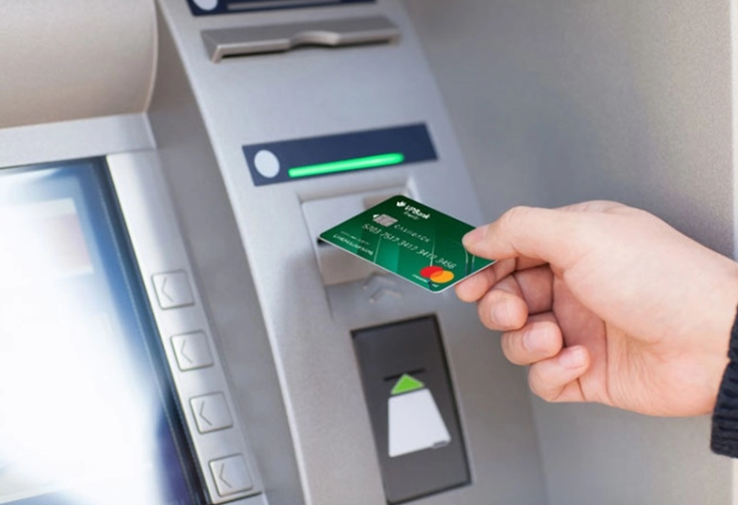
Credit & Debit Cards - Where They’re Accepted
While Vietnam is still a cash-first society, credit and debit cards are increasingly accepted in urban areas, especially at:
- Hotels and resorts
- Upscale restaurants and cafes
- Supermarkets and shopping malls
- Ride-hailing apps like Grab (when linked)
Visa and MasterCard are the most commonly accepted, while American Express is less widely used. Always inform your bank before traveling to avoid any fraud alerts or blocked transactions.
That said, carry cash for small purchases, street food, taxis, and local markets. Many local businesses and attractions still don’t accept cards.
Digital Payments and Mobile Wallets
Digital payments are growing in popularity among locals, especially younger generations. The most common mobile wallet apps used in Vietnam include:
- Momo
- ZaloPay
- VNPay
- Shopee Pay
While these platforms are convenient, they often require a Vietnamese bank account to use. For tourists, the best option is to rely on card-linked apps like Apple Pay or Google Pay, which are accepted in some international chains and modern establishments.
If you're staying longer, consider getting a local SIM card with e-wallet capabilities and asking hotel staff or a local friend to help you set it up.
.png)
In summary, use a combination of ATM withdrawals, cards for big expenses, and cash for daily use to make your trip smooth and stress-free.
Budgeting for Your Vietnam Trip
Vietnam is known for being one of the most affordable travel destinations in Southeast Asia, making it suitable for all types of travelers - from backpackers on a tight budget to luxury seekers. Understanding how much you’re likely to spend daily will help you plan more confidently and avoid overspending.
Daily Budget Estimates for Different Travel Styles
Here’s a general idea of what you can expect to spend per day based on your travel style:
- Budget Travelers ($25-$40/day): Dorm beds or guesthouses, street food, local buses or Grab Bike, and free or low-cost attractions.
- Mid-Range Travelers ($50-$100/day): Comfortable hotels or Airbnbs, meals at mid-range restaurants, Grab car or domestic flights, and a mix of guided tours and entrance fees.
- Luxury Travelers ($120-$300+/day): High-end hotels and resorts, fine dining, private transfers or car rentals, and personalized tours.
Cost of Accommodation, Food, Transportation, and Attractions
When budgeting for your Vietnam trip, it's helpful to break down average expenses by category. Accommodation in Vietnam ranges widely depending on your travel style. Dorms and hostels are ideal for backpackers, typically costing between $5 to $15 per night. Budget hotels and guesthouses are slightly more comfortable and usually range from $15 to $35 per night. For those seeking more convenience and comfort, mid-range hotels cost around $40 to $80 per night, while luxury hotels and resorts can range from $100 to over $300 per night, especially in popular destinations.
Food is another area where travelers can save or splurge depending on their preferences. Vietnam's famous street food-like pho or banh mi-costs just $1 to $3, making it both affordable and delicious. Local restaurants offer sit-down meals for about $3 to $7, while Western or upscale dining venues may charge between $10 to $25 or more per meal.
When it comes to transportation, public buses are the cheapest option at just $0.30 to $1 per ride. Grab, a popular ride-hailing app, offers motorbike rides for short distances priced at around $1 to $3. For longer trips, domestic flights typically cost between $30 and $80 one way, depending on the route and time of booking. Overnight trains are a scenic and practical way to travel across the country, with prices ranging from $20 to $50 depending on the class of service.
Attractions in Vietnam are generally affordable. Entrance fees to museums usually range from $1 to $3. Guided tours-such as walking tours or cultural excursions-start at around $15 and can go up to $50 or more, depending on the duration and inclusions. Special attractions, including national parks or cruise experiences like Ha Long Bay, are priced higher, often between $30 and $100+ depending on the type of tour and amenities provided.
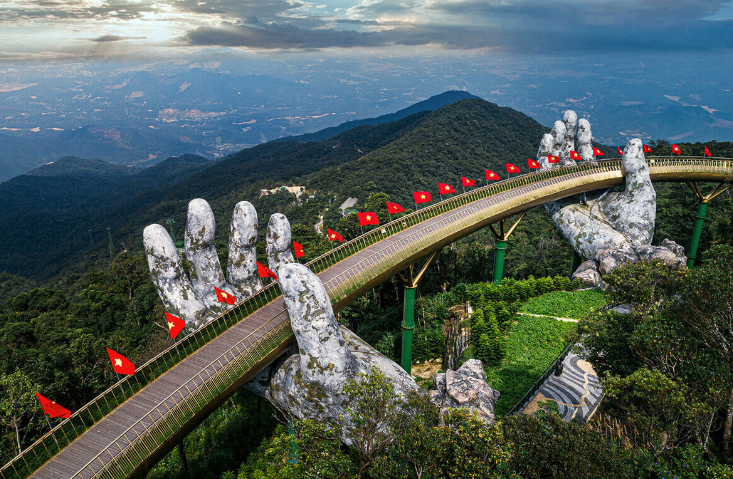
How to Save Money While Traveling in Vietnam
- Eat local: Street food isn’t just cheap - it’s delicious and often more authentic than restaurants. Look for places busy with locals.
- Use public transport or Grab Bike: They’re cheaper than taxis, especially for short distances.
- Travel off-season (May-September): Prices drop during the rainy season, and you can often find discounts on flights and accommodation.
- Book domestic transport early: Especially flights and trains - prices tend to rise closer to departure dates.
- Negotiate at markets: Bargaining is expected in many local markets, especially for souvenirs.
- Avoid currency exchange at airports: You’ll get better rates in the city, especially at authorized exchange bureaus or local banks.

With smart planning, you can stretch your dollar while still enjoying everything Vietnam has to offer - from its bustling cities and ancient temples to its stunning coastlines and cuisine.
Common Money Scams & Safety Tips
When traveling in Vietnam, it’s important to be aware of common money-related scams to protect your wallet and ensure a smooth trip. While the country is generally safe for tourists, petty scams can still occur - especially in touristy areas.
How to Avoid Getting Overcharged or Scammed
When shopping in Vietnam, always double-check prices, especially in markets where items aren’t clearly labeled. If you're unsure, ask a local or your hotel for price guidance. Use metered taxis from trusted companies like Mai Linh or Vinasun, or opt for ride-hailing apps like Grab for fixed fares. Be alert when receiving change-vendors may short-change you, particularly if you pay with large bills, so count your money on the spot. For currency exchange, stick to banks, licensed gold shops, or certified counters, and avoid street exchangers offering suspiciously good rates. Also, take care with Vietnam’s similar-looking currency notes-10,000 VND and 100,000 VND bills are often confused, and some vendors may take advantage of that.
Recognizing Counterfeit Currency
Counterfeit bills are not common, but it’s wise to be cautious - especially with larger denominations like 200,000 and 500,000 VND. Here’s how to spot fake currency:
- Check for transparent windows and embedded security threads in the plastic polymer bills.
- Feel the texture: Real Vietnamese banknotes have a slick, plastic feel and some embossed elements.
- Hold the bill up to the light: You should see hidden watermarks and color-shifting ink.
When in doubt, compare with another note or ask a bank teller or trusted local to help you verify.
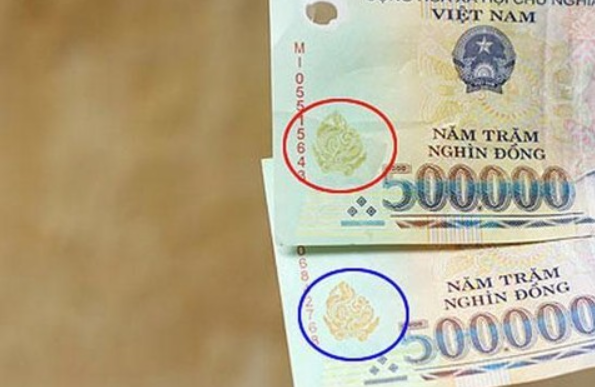
Best Practices for Carrying Cash in Vietnam
- Use a money belt or neck pouch when in crowded areas to protect against pickpockets.
- Avoid carrying large sums: Withdraw smaller amounts as needed from ATMs - they are widely available in cities.
- Split your money: Keep some cash in your wallet for everyday use and the rest in a safe place (e.g., hotel safe or separate pouch).
- Carry small bills: Many small vendors won’t have change for large notes like 500,000 VND, so keep smaller denominations handy.
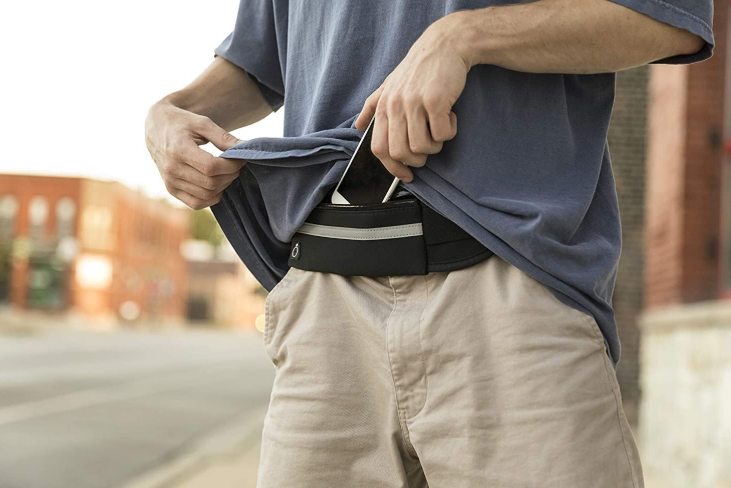
By staying alert and following these practical tips, you can navigate Vietnam’s cash-based economy confidently and avoid common financial mishaps.
Essential Travel Tips for US Visitors to Vietnam
Best Time to Visit Vietnam - Weather Guide
Vietnam’s weather varies significantly by region due to its long geography. The best time to visit depends on which part of the country you plan to explore:
In Northern Vietnam-home to Hanoi, Sapa, and HaLong Bay-the best time to visit is from October to April. This period brings cooler, drier weather, especially pleasant in winter and early spring. If you're sensitive to heat or humidity, it’s best to avoid the summer months from May to August, which can be hot and rainy.
Central Vietnam, including destinations like Hue, Da Nang, and Hoi An, is ideal from February to August. You can expect warm, sunny days that are perfect for beach trips and sightseeing. However, from September to November, the region is occasionally hit by typhoons and experiences heavier rainfall, so plan accordingly.
Southern Vietnam, covering Ho Chi Minh City and the Mekong Delta, is best visited between November and April. This dry season offers warm yet comfortable weather for exploring the region. From May to October, the south enters its rainy season, bringing high humidity and regular downpours, although showers are often short-lived.

Travel Insurance - Why You Need It?
Travel insurance is essential when visiting Vietnam. It not only covers trip cancellations, lost luggage, and delays but also provides critical medical coverage. Healthcare for foreigners is expensive at international hospitals, and without insurance, you may need to pay upfront. Additionally, if you plan adventurous activities like motorbiking, hiking, or boat trips, insurance offers peace of mind in case of injury or emergency evacuation. Make sure your policy includes COVID-19 coverage and covers medical expenses, trip interruption, and personal liability.
Packing Tips - What to Bring from the USA?
When packing for Vietnam, prioritize comfort, weather suitability, and cultural sensitivity:
- Clothing: Lightweight, breathable clothes for tropical weather; long sleeves and pants for temples or sun protection; a light jacket for the cooler north in winter.
- Footwear: Comfortable walking shoes or sandals; waterproof shoes during rainy season.
- Essentials: Sunscreen, insect repellent, reusable water bottle, universal power adapter (Vietnam uses 220V, types A, C, and D plugs).
- Health & Hygiene: Prescription medications, basic first aid kit, hand sanitizer, wet wipes, and toiletries (some familiar US brands may be hard to find).
- Extras: Copies of your passport, visa approval letter, travel insurance info, and offline maps or guidebooks.
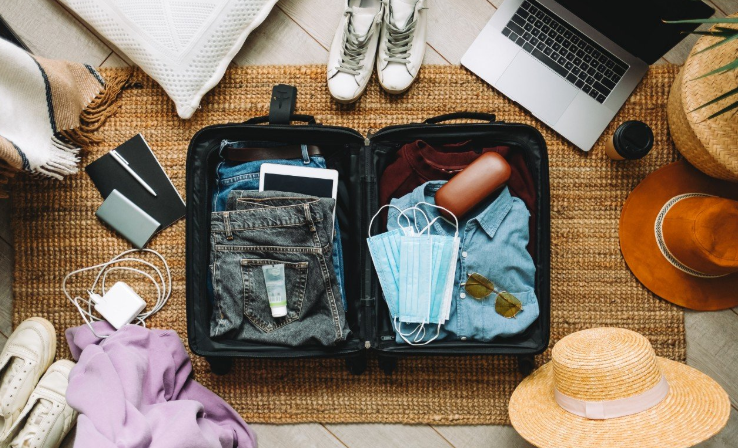
Health & Safety - Vaccinations, Food, and Water Precautions
Before traveling to Vietnam, make sure your routine vaccinations like MMR and tetanus are up to date. The CDC also recommends vaccines for hepatitis A and typhoid, especially if you plan to eat local food or visit rural areas. For extended stays or travel in the countryside, Japanese encephalitis may also be considered. When it comes to food, sticking to reputable restaurants or street vendors known for cleanliness-busy stalls with a steady flow of locals are usually a safe bet. Avoid undercooked meats or seafood. Tap water in Vietnam is not safe to drink, so always choose bottled water with an intact seal, and use it even for brushing your teeth. In remote areas, avoid ice unless you’re sure it’s made from purified water.
Language Tips - Basic Vietnamese Phrases for Tourists
While many people in Vietnam’s tourist areas speak some English, learning a few Vietnamese phrases will enrich your experience and earn you warm smiles. Here are a few to get you started:
- Hello: Xin chào (sin chao)
- Thank you: Cảm ơn (gahm un)
- Yes / No: Vâng / Không (vuhng / khong)
- How much is this?: Cái này bao nhiêu tiền? (guy nai bao nyew tien?)
- Delicious!: Ngon quá! (ngon wa!)
- Where is the bathroom?: Nhà vệ sinh ở đâu? (nya veh sinh uh dow?)
Even simple efforts show respect and appreciation for the local culture - and can help you out in situations where English isn’t widely spoken.
Conclusion - A Hassle-Free Trip to Vietnam for US Travelers
Planning Ahead for a Smooth Journey
To ensure a stress-free trip to Vietnam, early preparation is key. From visa applications to flight booking and currency planning, every step done in advance saves time, money, and potential frustration. Vietnam is a diverse country with welcoming people and unforgettable experiences-but like any international destination, it rewards travelers who plan smartly.
- Apply for your visa early to avoid processing delays.
- Choose flights based on your budget, transit preferences, and arrival airport.
- Understand how money works in Vietnam to avoid scams or confusion.
- Learn a few basic Vietnamese phrases to connect better with locals.
Key Takeaways for Visa, Flights, and Money Management
US travelers are required to obtain a visa before entering Vietnam, and the e-visa is the most convenient option. You can apply online, usually receive approval within three working days, and simply print it out to carry with you. Be sure your passport is valid for at least six months beyond your planned stay.
When it comes to flights, there are currently no direct routes from the US to Vietnam, but many reputable airlines like Korean Air, ANA, Qatar Airways, and EVA Air offer connecting flights through major Asian hubs. To get the best deals, book your tickets two to three months in advance and compare prices using platforms such as Google Flights, Skyscanner, or Kayak.
As for money, Vietnam uses the Vietnamese Dong (VND). It’s best to exchange a small amount of USD at official banks or licensed money changers upon arrival. ATMs from major banks are widely available and generally reliable, but always avoid withdrawing large sums at once. While credit cards are accepted in larger cities and upscale venues, cash is still the preferred payment method, especially in rural areas or local markets.
Final Checklist Before You Fly to Vietnam
- Valid passport (at least 6 months from entry date)
- Approved visa (E-visa printout or VOA approval letter)
- Printed flight tickets and hotel confirmations
- Travel insurance with medical coverage
- Local currency (VND) or USD for exchange
- ATM or travel card with low foreign transaction fees
- Essentials: adapter, medication, sunscreen, lightweight clothes
- Copies (digital and printed) of important documents
- Mobile apps downloaded: Grab (for transport), Google Translate, XE Currency, and local payment apps like Momo or ZaloPay
- List of emergency contacts, embassy details, and travel plans
With this checklist in hand, you’re ready to embark on an exciting, smooth, and memorable journey to Vietnam. Whether you're exploring Hanoi's rich museum scene, enjoying street food in Ho Chi Minh City, or relaxing on a beach in Da Nang, traveling prepared makes all the difference.









